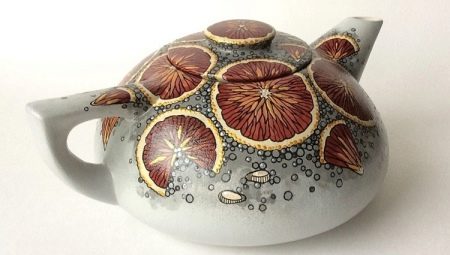Tea made in accordance with all the rules and in the right dishes will bring not only aesthetic pleasure. Depending on the variety, tea can either calm too much excitement, or, conversely, invigorate after a difficult day. In order for the taste of the drink to fully reveal all its positive properties, it is necessary not only to choose the right kind of tea, but also the dishes in which it will be brewed.
The teapot has undergone many changes over its centuries-old history of existence., and today there is a huge amount of materials for its manufacture. Today we will talk about the very first of them - clay (or ceramics).

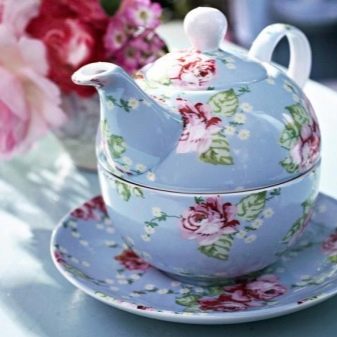
A bit of history
It's no secret that the birthplace of tea is China, so the ceremony of preparing this drink originated there. The very first teapots were made of clay. Moreover, any variety was not suitable for these purposes. What was needed was a special kind of clay, which was mined in Jiangsu province in the vicinity of Yixin city. From it came the name of the variety - Isin clay. This variety is easily recognizable by its characteristic reddish-brown hue. Products from it were especially appreciated at all times for the fact that with their ability to hold liquid inside, they allow air molecules to penetrate inside, due to which the drink in a ceramic teapot acquires a special taste and aroma.
Moreover, the longer the dishes were in use, the more valuable it was considered. Over time, the teapot absorbed aromas and enzymes, and the tea brewed in it acquired a special unique taste.
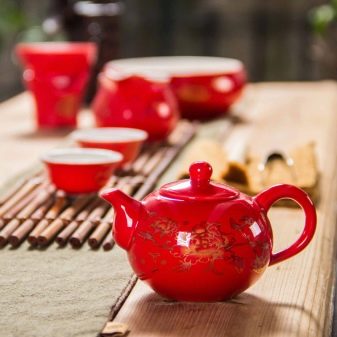
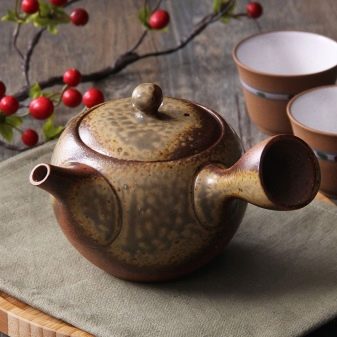
Variety of ceramics
All ceramic dishes, including teapots, are divided into several categories depending on the feedstock and manufacturing technology:
- in fact, the clay itself;
- faience;
- china.
There are many types of clay used to make dummies. All of them are divided into hard and soft breeds. A group of soft clays gives greater shrinkage during firing, and hard varieties give a more saturated shade. Depending on the type of clay and the firing temperature, finished products can take on different shades: from light sand to almost black. Factory products are decorated with dyes to give them a more attractive look.
Faience can be called an intermediate link between clay and porcelain. It looks more elegant than ordinary clay, but it is inferior in strength to porcelain and crackes over time, while dishes made from real porcelain, even after many years, remain as beautiful and elegant as they were originally.
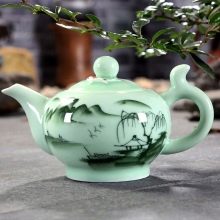
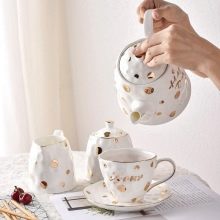
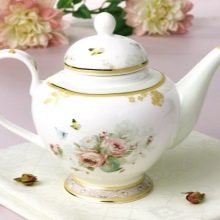
Manufacturing process
Chinese tea growers are valued by foodies around the world. Real Isin teapots are made by hand. For this, the raw materials must first be dried. Previously, this process could take from several days to several weeks, today, thanks to the vacuum drying method, it has been significantly reduced. When the clay dries, it is crushed into powder, then sieved and water is added, bringing to a pasty state. Then the resulting mass is beaten to the desired thickness for compaction and displacement of excess fluid. After that, the master begins to shape the future product. The nose and handle to the teapot are attached later.
With the help of special tools and accessories, the dishes are brought to perfection, and then decorate with carving or inlay. Inexpensive models of teapots for tea are cast in plaster molds. At the final stage, the finished ceramic product is subjected to three times firing.
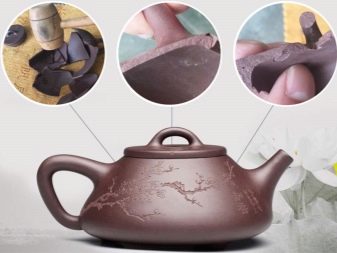
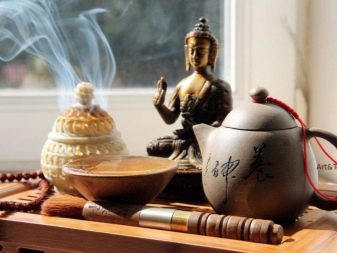
Variety of shapes and decor
Traditionally, teapots are rounded. It is believed that it contributes to a better disclosure of aroma. However, hand-made piece models can look different, sometimes quite fancy. For example, teapots in the form of animal figures or an opened bud look very original. Sometimes on dishes you can see the author’s stamp, painting, carving and other decorative elements.
If desired, you can buy a kettle with a strainer or in a set with a cup. To brew medicinal herbs, it is recommended to purchase a double-walled kettle. He possesses the capabilities of a thermos and is able to maintain the temperature of the contents within himself for 40-60 minutes. As for the size of the kettle, everything here is very individual. For personal use, 100-350 ml dishes will be enough, for a family it makes sense to look at half-liter teapots, and for a large company you need a more impressive volume - about 2 liters.
When choosing a volume, you should also take into account the preferred varieties of tea. For large-leaf varieties, you need a lot of space, and for a packaged tea, a glass is enough.
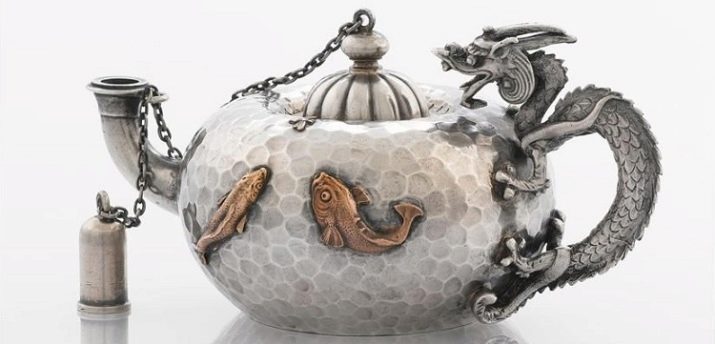
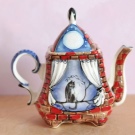

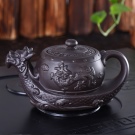
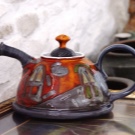
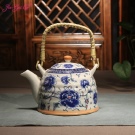
Features of use
As mentioned above, ceramic dishes have a unique ability to accumulate odors. Therefore, experts advise having a separate teapot for each grade. Relaxation is allowed for tea varieties that are similar in composition and aroma. Only in this way you can feel the whole bouquet of the drink in full. In clay teapots, it is better to brew black and red teas. Ceramic enameled teapots are recommended for lighter varieties: white, yellow or green teas.
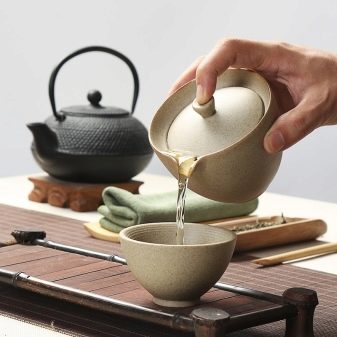
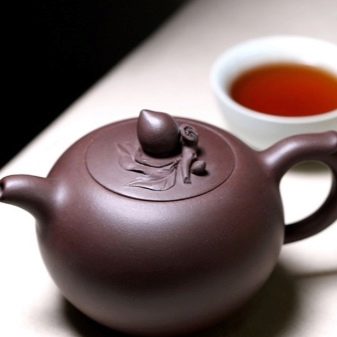
Advantages and disadvantages
Consider the reasons why you should choose a ceramic teapot.
- Diverse design. It is very convenient to work with ceramics. It looks equally good and painting, and inlay, and stucco molding. And even a smooth clean surface, devoid of any additions, looks elegant and noble.
- Excellent heat retention. Unlike some other materials, ceramics are more heat-resistant, which means that tea in such a teapot is better brewed and tastier.
- Keeps quality. Clay is a natural material and when heated does not emit harmful substances, so the drink will retain all its properties and will not deteriorate.
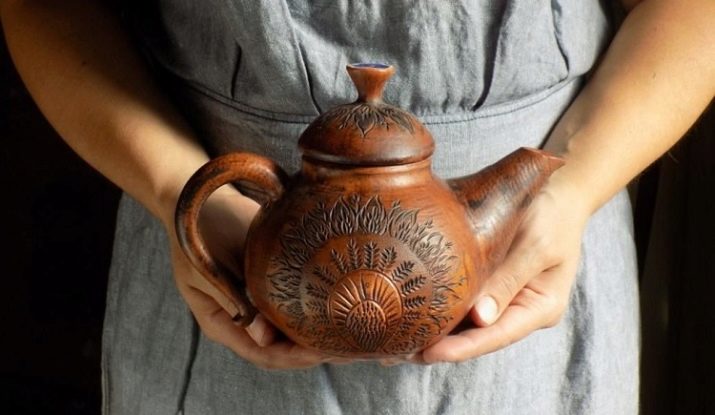
But this dish has some disadvantages that must be taken into account.
- Fragility. Despite the external solidity of clay teapots and the advertised strength of porcelain, ceramic products are significantly inferior in strength to their counterparts made of other materials, such as metal.
- The lid must be kept when filling. Some teapot models, such as the press kettle, have a special holding device for the lid. In ceramics, such devices are almost always absent.
- The handle may heat up, and this creates some discomfort during use.
- Cost. Even mass factory copies are somewhat more expensive than analogs made of plastic or metal, and the price of genuine Chinese exclusive models can be very high.
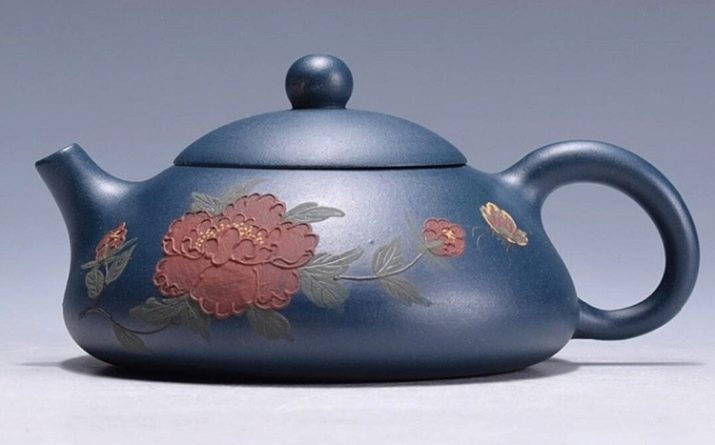
Subtleties of choice
When buying a kettle some points should be noted.
- Product weight. The larger the kettle, the more it weighs with water, and holding it with one hand can be very difficult.
- Cap. The diameter of the lid must exactly match the size of the neck of the kettle. Then she will sit tight in the nest. Ideally, if it will have a holding device, but in ceramic models it is rare. The lid handle must have a hole for steam to escape.
- Integrity. Any chips and cracks are considered defects. They affect not only the aesthetic properties, but also the quality of the drink.
- Nose. Its height should be equal to the level of the neck of the teapot or be slightly larger. It should be slightly curved, narrowed at the end and attached to the body of the kettle at an angle of about 30 degrees. Ideally, if there is a built-in strainer or perforated grate between the spout and the wall of the kettle to hold the tea leaves.
- A pen. Usually it is located on the side. However, it is much more convenient if it is on top. It is easier to keep such a design, and it is possible to hang it over a fire if necessary.
- Strainer. It can be bundled with a kettle or sold separately. The most common option is from stainless steel. There are also strainers made of silicone, plastic, porcelain or glass.
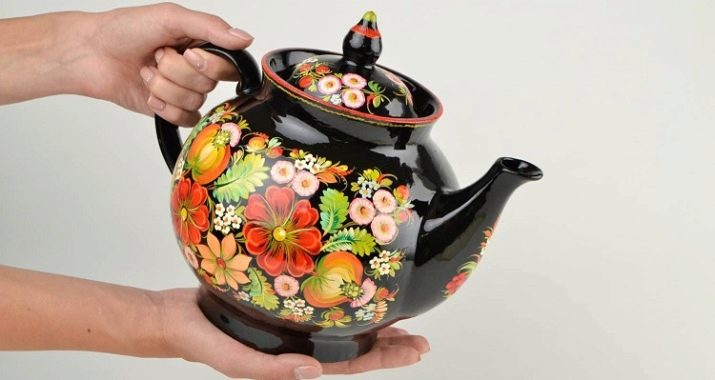
Whatever version of the teapot you choose, it is advisable to first hold it in your hand and understand how convenient it will be in operation.
In the next video, you will find an overview of the Pelangi ceramic teapot.
